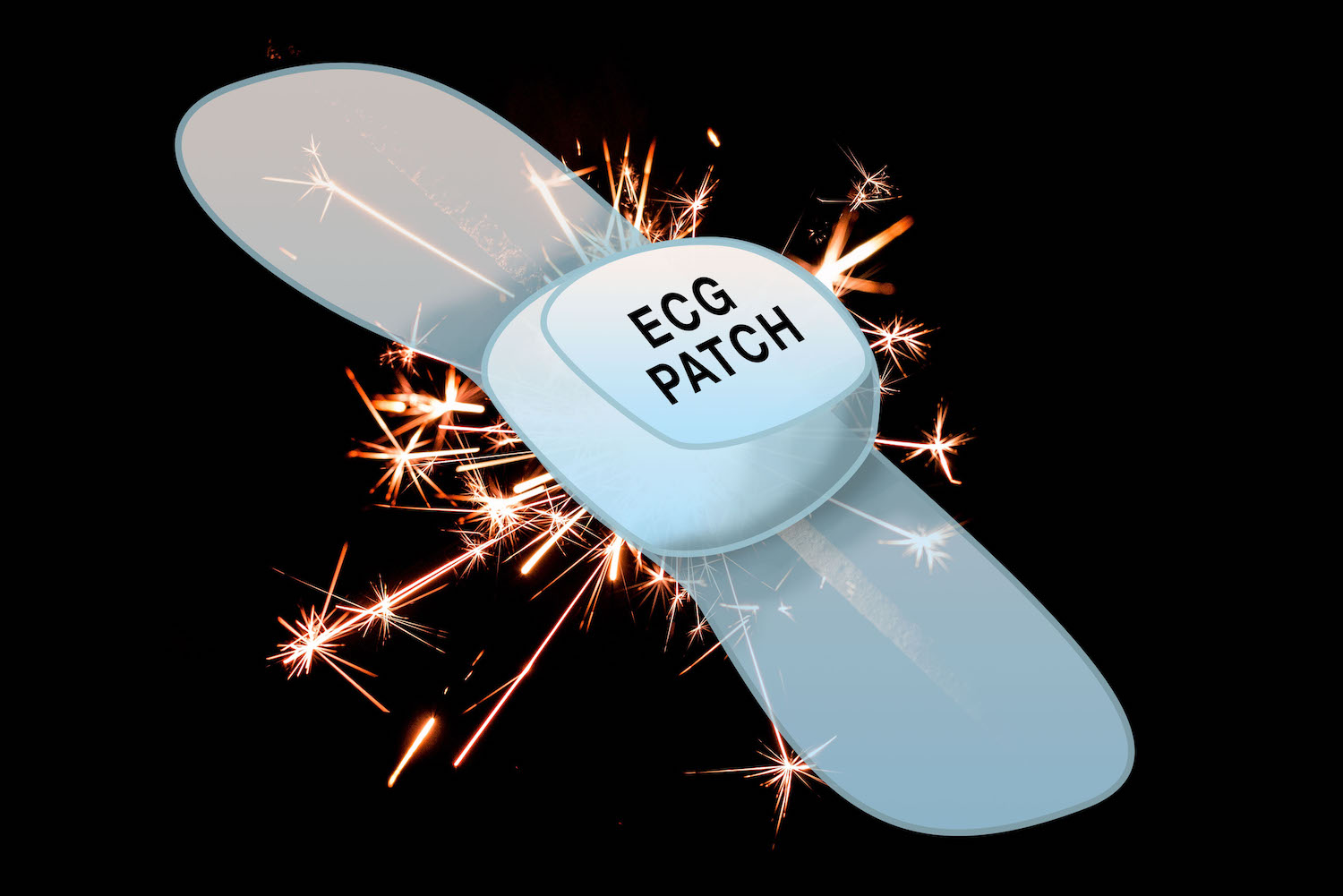
ECG Patch Technology, A Flash in the Pan?
A truer statement was never made that more data is always better than less data. Longer tests provide better results. Patch companies always promote this as a reason to go with their 14 day monitoring patch over 24 hour Holter monitoring. We completely agree that a longer test duration can yield more results, but are you actually getting better results? Is the amount of data you receive truly more? In this article, we will look at some of the serious problems surrounding ECG Patch technology, including incomplete ECG, skin irritation, partial result reporting and little physician reimbursement.
Patch technology took the industry in stride when it was first released. Many doctors were on board for quick ECG monitoring. Throw a patch on a patient, send them out the door, and they come back with ECG results. Easy. Granted, any removal of the patch disrupts the test, the patient has to wear the patch for up to 14 days straight, and results take almost a month to receive, but it’s “easy”. However, just because it’s easy, does it yield better results?
Incomplete ECG
Patch technology gained popularity upon its launch in that it seemed easy to use, for both patient and clinical staff–it’s a ”lick and stick”. The patient is sent out the door with the patch and is monitored discreetly over 14 days. But there are a few things the patch companies don’t want you to know. The first and key issue is that the patch provides only a partial augmented image of the patient’s ECG. Imagine looking out the window through partially closed blinds. That picture that you see will be incomplete. If you are looking at beautiful scenery, that can be merely an irritation, however, if you are looking at an incomplete picture of a patient’s ECG? That can be a serious problem when making a diagnosis.
The first and key issue is that the patch provides only a partial augmented image of the patient’s ECG.
More data is always better than less data. We agree this is absolutely correct. But with long term patch technology, the net gain is not more data. The algorithm reduces what it thinks is redundant data. Every significant change in waveform is very significant and specific in the eye of a specialist.
An Auto Analysis
True, you have 7-14 days that the patch monitors, but do you see all of the data? The truth is that patch technology relies on algorithms, recording only pieces of your patient’s arrhythmias. The algorithm takes the ECG in pieces, separating it into sections as it records. When an arrhythmia occurs, the algorithm pieces the ECG back together at very low resolution in an attempt to provide a glimpse of what the algorithm caught. Imagine the errors that occur if you are depending on an AI/templating software. Auto analysis, done by an algorithm, and not the cardiologist, is incomparable to original, unfiltered ECG. You can’t make life and death decisions off of this “doc-in-the-box” technology. It is essential for the physician to see every raw, unfiltered beat in context. If your patch company isn’t giving you full disclosure, how do you know they didn’t miss something?
You can’t make life and death decisions off of this “doc-in-the-box” technology. It is essential for the physician to see every raw, unfiltered beat in context.
Skin Irritation
Another issue of patch technology is that the results are not received for a long time after the test is started (>30 days). The patient leaves the office with the patch attached to their skin, unable to move it for 3-14 days. If the patch is irritating the skin, the patient cannot do anything about it without disruption. The device must remain attached to the body or it disrupts the test. When the patient returns, the patch is sent off to be read, a process that can take up to 30 days. Upon completion, the results sent back to the physician are only glimpses of the waveform and very little surrounding ECG.
Low Physician Reimbursement
At the beginning of 2021, CMS.gov drastically lowered the reimbursement for long term ECG Patch technology. Before this pricing adjustment, patch companies were bringing in much higher reimbursements for long term ECG testing. Reps would drop off devices at no charge, only to collect the lion’s portion of the reimbursement (technical code) leaving their clients with a much lower interpretive reimbursement ($25). Patient’s healthcare should not revolve around reimbursements. However, there is something not quite right about a hard working doctor getting the short end of the stick when the reimbursement structure isn’t balanced.
Patch technology is marketed as an easy, patient-compliant device, but the truth is that not only is the test flawed, it is also more costly than its counterpart, a traditional Holter. Quick and easy sounds like a favorable option, however, is it the truly better one for you and your patients?
